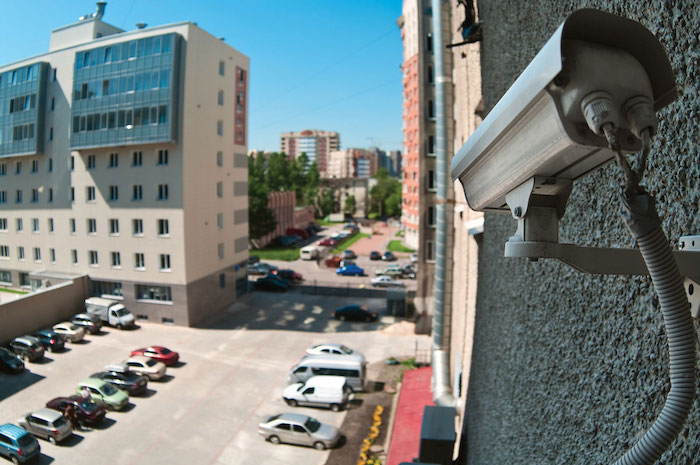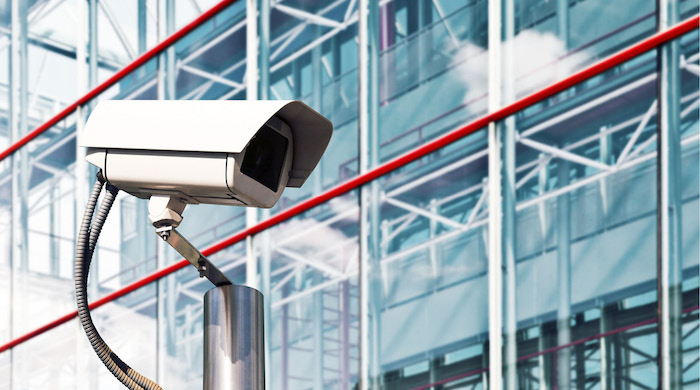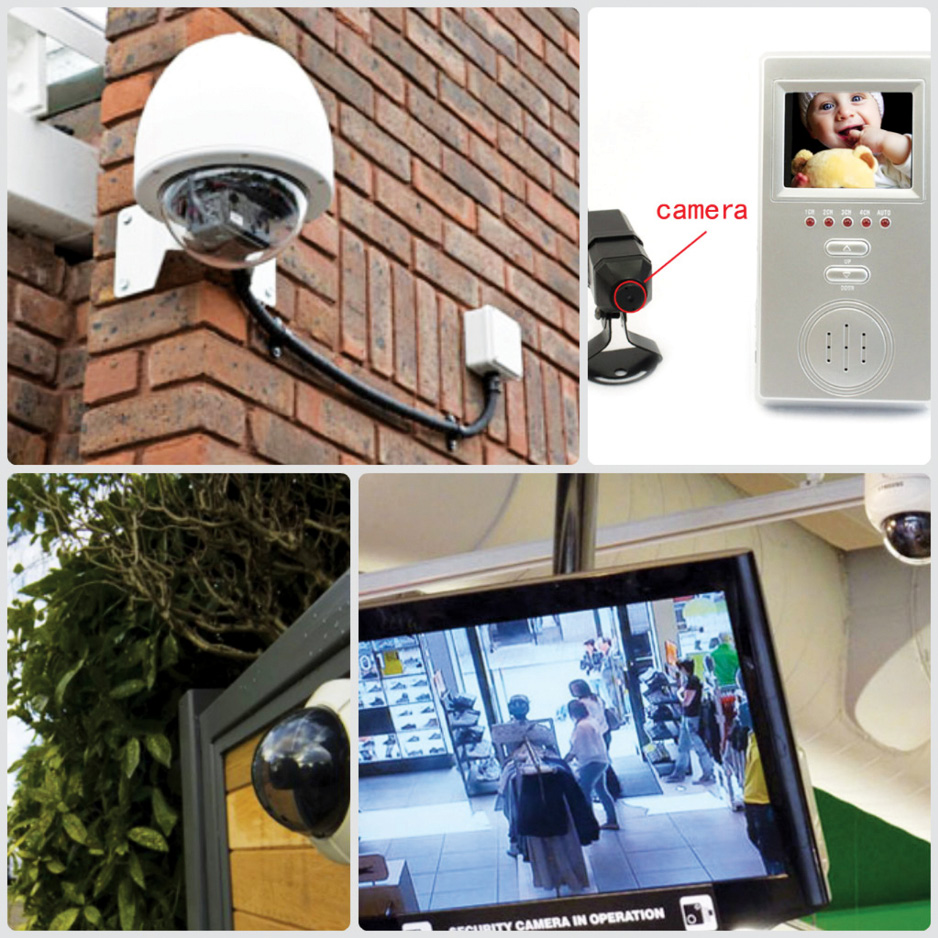Surveillance in its various forms and for different situations has been practiced by humans from time immemorial. People used to accomplish this task for themselves and for others as a social obligation or as a paid job.
When unlawful activities like thefts and crimes in the society are growing in an unprecedented and uncontrolled manner, and law-enforcing agencies are finding themselves incapable to cope up with the challenges and smart modes of operandi by thieves and criminals, along with the isolated and indifferent attitude of individuals towards society, the role of electronic surveillance has become indispensable.

The use of electronic or electric methods to keep watch over persons or organisations, termed as physical surveillance, has obvious advantages for the purpose of law enforcement. It is a means to observe suspected individuals in normal, uninhibited states to gather possibly useful information.
Two general categories of electronic communication surveillance exist.
Wire communications refer to the transfer of human voice from one point to another via use of a wire or cable. When law enforcement agencies tap a wire, they use some mechanical or electrical device that gives them access to the communication, thus disclosing contents of the conversation.
Electronic communications refer to the transfer of information, data or sounds from one location to another over a device designed for electronic transmission. This type of communication includes email or information uploaded from a private computer to the Internet.
The techniques of electronic eavesdropping offer the possibility of gathering evidence, which would otherwise be unobtainable.
Interception of wire communications is almost as old as the inventions of the telegraph and telephone. Late ninteenth century witnessed the inventions and uses of microphones, dictograph recorders and hidden cameras to conduct surveillance, usually by private detective agencies. Wiretapping and other forms of electronic surveillance became big business as manufacturing concerns started producing more elaborate and efficient means of eavesdropping. Moreover, planted bugs and wiretapping were used extensively in 1940s and 1950s. As technology matured, debate started on its successes and failures.
Electronic security solutions

The emergence of globalisation and liberalisation brought prosperity and improved standards of living. With rising levels of income, the crime graph also increased in almost every part of the world. If people are earning big money, they also have to live with the fear of safety and security of their hard-earned money. Apart from money, they need to safeguard their families, loved ones and precious possessions.
Governments worldwide try their best to protect the interests of their citizens but most often than not, it does not suffice. Because of this, most people, especially in urban areas, prefer to have their own electronic security systems installed in their homes and offices.
Electronic security systems have become exceedingly essential for the masses. These help in several ways. First, these let you have a peaceful sleep, knowing that you and your family are safe and secure. The terror of burglars is everywhere. No house can be called safe, knowing that even these miscreants use the latest technology and equipment to rob valuables.
It is always better to have a proactive approach while thinking of installing electronic security systems. These systems are wonderfully helpful in protecting your interests. You should never take a chance as far as home security is concerned. Nothing matters more than the lives of your loved ones.
Electronic surveillance is the monitoring of behaviour, activities or other changing information, usually of people and often in a surreptitious manner. It usually refers to observation of individuals or groups by government organisations.
The word surveillance may be applied to observation from a distance by means of electronic equipment (like CCTV cameras) or interception of electronically-transmitted information (like the Internet traffic or phone calls). It may also refer to simple, relatively no- or low-technology methods such as human intelligence agents and postal interception.
Surveillance is very useful for governments and law enforcement agencies to maintain social order, recognise and monitor threats, and prevent/investigate criminal activity. In today’s scenario of intrusion, unsuspected attacks and thefts, security planning is incomplete without intelligent deployment of technology. Technology can solve many issues that human beings can never handle effectively by themselves.
To provide a complete solution in the domain of security, there is an exhaustive range of electronic systems, which would provide the much needed strength to human guarding. Comprehensive surveillance control systems and management solutions deliver feature-rich camera management, intelligent detection and delivery, and the most advanced means of video monitoring.
Some crucial areas of application are banks, homes, shops, offices and jewellery shops, to name a few. Electronic alarms, barrier bars and motion detectors are some home security options.
Electronic security systems are effective. In fact, many convicted burglars have admitted that if a home is protected by one, they will choose another target.
Types of surveillance
Various surveillance means include computer surveillance, bugged telephones, surveillance cameras, social network analysis, biometric surveillance, aerial surveillance, data mining and profiling, corporate surveillance, human operatives, satellite imagery, identification and credentials, radio frequency identification (RFID) and geolocation devices, RFID tagging, global positioning systems, mobile phones, surveillance devices and postal services, among others.
Video surveillance. One of the technologies that is gaining traction is video. This ubiquitous security medium has made it more acceptable for companies to have these as part of their arsenals. Two major applications for video surveillance are monitoring and forensics.
Monitoring is when companies use it in real-time to observe and react, and forensics is using the video system for review after an event has happened.
Analogue cameras are the original CCTV cameras that are hooked to the walls. The newer network cameras, on the other hand, can be set up almost anywhere in a building. Because of wireless capabilities, these are connected to the company’s network server and video is streamed.
Safety alarms. An alarm system with individualised messaging capabilities is another example of where technology is advancing. Not only can a fire alert be sent, but other predetermined messages such as one announcing a terrorist attack or a chemical release can inform employees as to what is going on during an emergency.

When deciding on a safety alarm system, it is recommended that you get your local fire department involved early to ensure the facility will be up to the requirement, and that the fire department will be able to familiarise itself with the company’s fire safety system and evacuation procedures.
Mechanical locks. Data transfer key is an example of a more contemporary key that still mechanically unlocks a cylinder, but the key’s electronic circuit talks to the lock and records the person’s identification (ID) number. The information captured in the lock can be downloaded to the key itself, or a handheld device can be used to retrieve the information from the lock and take it back to a computer. A log of insertions for that particular lock can be developed, and this offers yet another layer of accountability.
ID cards. Proximity cards and devices continue to remain the most popular form of identification. Proximity technology is very user-friendly and cost-effective. Its convenience makes it widely used across vertical markets.
Smartcards, on the other hand, use the newer identification technology that some day may be more widely used if things like biometrics are adopted. While smartcards have many benefits over proximity cards, especially when it comes to using a single credential for multiple applications, not all end users require these additional security features. So proximity, which is a long established technology, is a perfectly suitable solution.
Smartcards can store digital certificates, encryption algorithms, biometric information and qualification information. And these maintain a contact or contactless interface, which is used to gain entry into access points.
Electronic surveillance of employees
Electronic surveillance of employees is increasing every year, according to an electronic monitoring and surveillance survey. Powerful reasons exist to monitor an employee’s online behaviour at work.
Not every workforce, workplace, or work culture and environment is a candidate for electronic surveillance at work. In fact, in some work environments (depending on the culture and environment desired), electronic surveillance of employees might injure trust and relationships, and send powerfully wrong messages to the workforce.
But use of electronic devices to keep watch over a person has advantages for law enforcement. It can be a means to freely observe and gather information on dangerous or suspicious individuals or groups. On the level of espionage, it can aid in the accumulation and assessment of information, foretelling hostile actions directed against the establishment/organisation.
Manufacturing and corporate firms have used electronic devices to gain trade and marketing secrets as well as to monitor employees. Intense competition and jealousy have provided the rationale for electronic snooping among private citizens.
Large-scale gambling operations could suffer at the hands of a bettor privy to otherwise inaccessible information. The same could be said for campaigning officials and the stock market.
In essence, electronic surveillance offers the possibility to gather information on any one, at any time, for any duration. There are numerous electronic devices employed for electronic surveillance, a few of which are discussed below.
Wiretapping. This refers to the deliberate use of electronic or electrical equipment to intercept oral communication of non-consenting parties by a third party. Although the means vary, most sophisticated techniques involve a connection to the wires at a central junction box, allowing the tapper the luxury of an extension to the desired wires.
Bugging. This involves placement of a miniature electronic device to overhear conversations. It is attractive because, unlike wiretapping, it can pick up many conversations if strategically planted.
Pen register. It is an electronic device that can be attached to a telephone line, and it can identify the number of calls made from a suspect’s phone. This device is frequently used by telephone companies to detect fraud and harassment.
Photographic surveillance. This refers to the use of audio-visual equipment to photograph individuals using CCTV to gather incriminating evidence.
Wired agents and informers. This technique involves wiring of an agent, informer or a consenting party to overhear, and sometimes record, conversations.
What about individual privacy
Electronic surveillance, when utilised as a tool for national security, law enforcement, industrial espionage or domestic relations, can limit and ultimately negate citizens’ right to privacy.
One form of electronic surveillance developed by law enforcement agencies resulted in attaching a bug to a person’s telephone line or to a phone booth and recording the person’s conversation. Courts have held that this practice constitutes a search under the Fourth Amendment, which protects an individual’s privacy rights for situations in which the person has a legitimate expectation of privacy.
Courts have also held that when having a telephone conversation, one would not expect an unknown third-party government agent to listen in on the conversation. A person has a legitimate expectation of privacy if the person honestly and genuinely believes the location under search to be private and if the reasonable person under same or similar circumstances would believe the location to be private as well.
Therefore law enforcement agencies have more leeway when intercepting communications in a public place than when the interception occurs in a secluded environment. Courts have given law enforcement agencies the freedom to record conversation during jail visits, provided the monitoring reasonably relates to prison security.
A major argument against the use of these extraordinary means suggests that electronic surveillance violates the very rights it purports to protect.
Failures of electronic surveillance
Electronic surveillance may offer advantages, such as night view using infrared lighting, which recognises what is happening at the place even when it is pitch dark but does not protect against thefts. However, it can deter criminals upfront, especially opportunistic criminals, who are looking for a quick way to steal valuable items. And, if a theft is committed, recordings in the video surveillance can serve as evidence while also enabling identification of the culprit(s).
With state-of-the art motion detection in surveillance cameras, we can enjoy all-round protection, even in hardly-accessible areas. With the low crime-detection rate for thefts and the high percentage of repeat offenders, advantages of a detailed surveillance with the chance of identifying culprits are pretty obvious. But even with electronic surveillance, all over the world, thieves, criminals and law breakers are still actively operating in warehouses, production locations and in offices, and are able to design unique methods to avoid electronic surveillance.
For thefts from ATMs, thieves use a device connected to a small laptop and inserted into card acceptance slots on ATMs. Armed with this toolset, they are able to install malware that is capable of siphoning the customers’ card data and personal identification numbers (PINs). The device looks like a green circuit board that is approximately four or five times the length of an ATM card.

Insertion of the circuit board causes the software running on ATMs to crash, temporarily leaving the cash machine with a black, empty screen. Thieves then remove the device and soon after, the machine restarts and begins recording the card and PINs entered by customers who used the compromised machines.
They then return a few days after infecting the ATMs to collect stolen card numbers and PINs. They reinsert the specialised chip card to retrieve purloined data and a separate chip card to destroy evidence of the malware.
Criminals are using improvised electronic devices to electronically unlock vehicles and steal whatever they find inside. These mystery gadgets reportedly recreate the same signals that the key fobs that many of us carry around.
Thieves are using these mystery gadgets to remotely unlock car doors and disable alarm systems. Once a car has been unlocked, it takes these thieves just a few moments to take what they want before leaving without a trace.
As cars get smarter, and more connected, threats also increase. Thanks to all the technology that is in our vehicles these days, these are potentially more vulnerable to hackers than ever.








